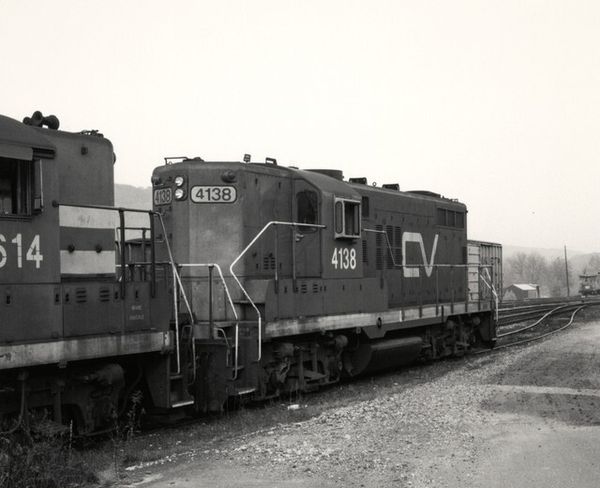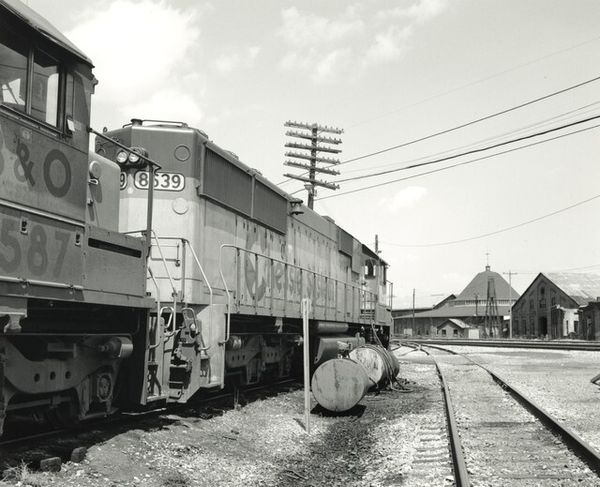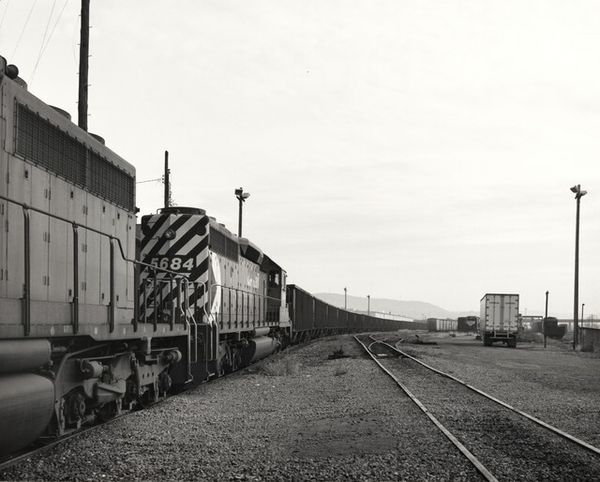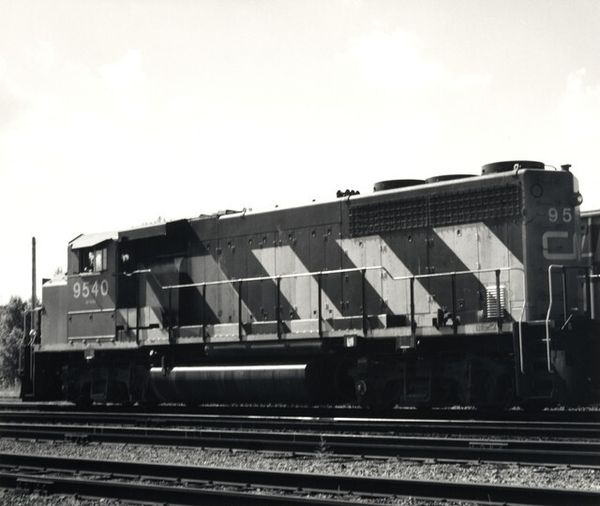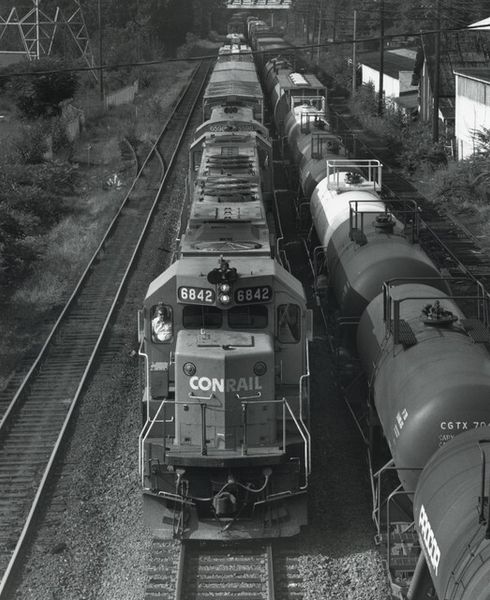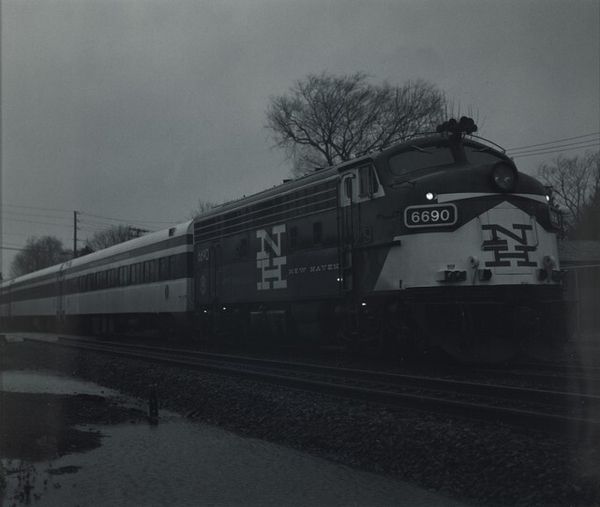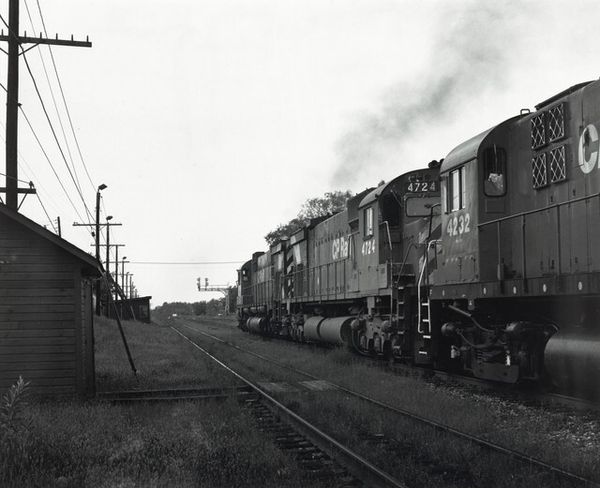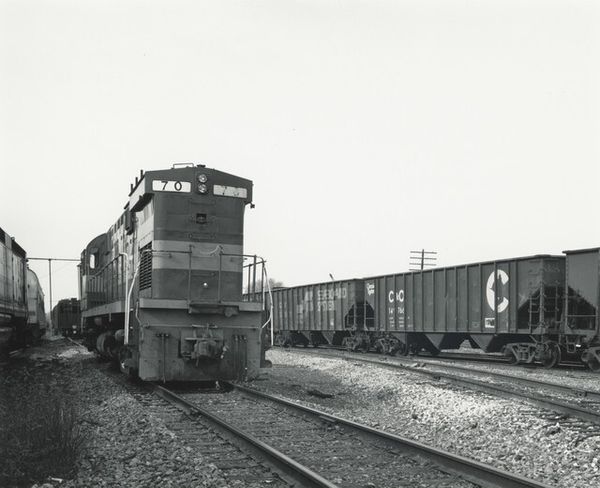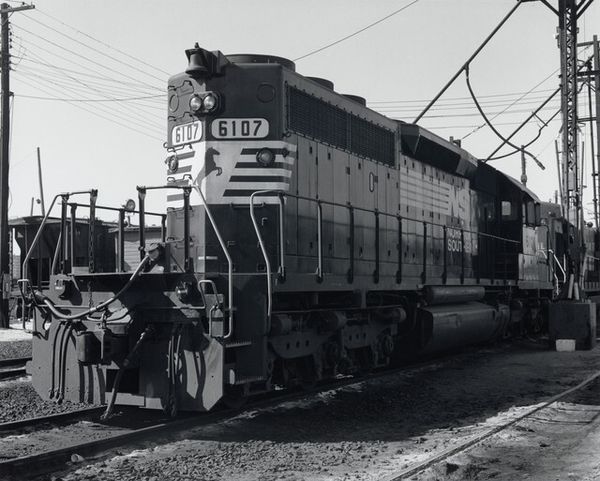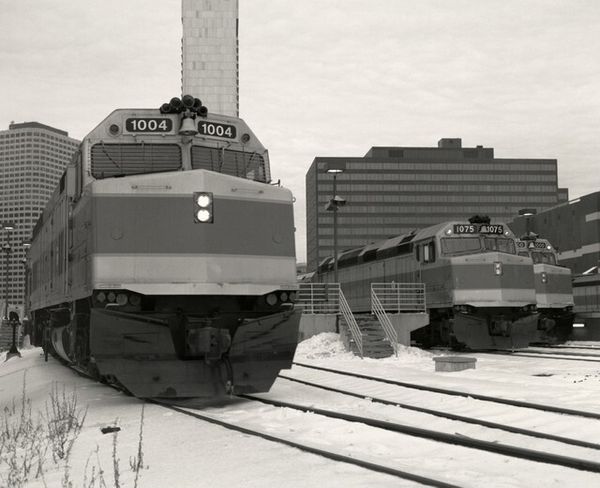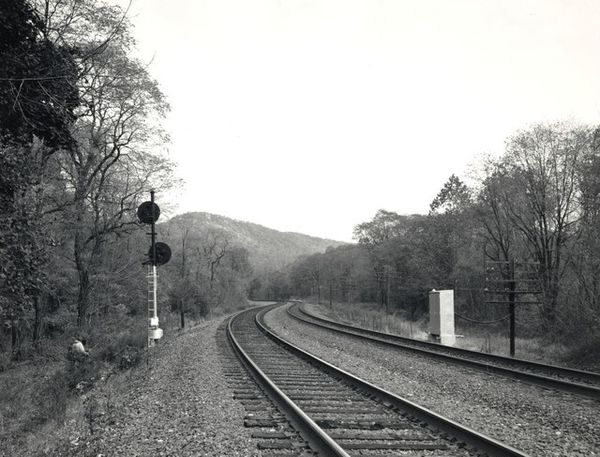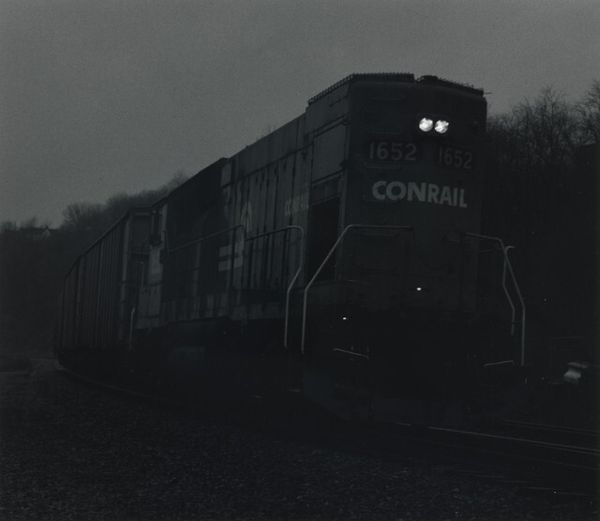
photography
#
contemporary
#
black and white photography
#
landscape
#
photography
#
monochrome photography
#
monochrome
#
realism
#
monochrome
Dimensions: image: 24 × 28.5 cm (9 7/16 × 11 1/4 in.) sheet: 27.9 × 35.5 cm (11 × 14 in.)
Copyright: National Gallery of Art: CC0 1.0
Curator: Standing before us is James Welling’s photographic piece, "East Pennsboro, Pennsylvania," a work that might have been created anytime between 1993 and 2019. It presents us with a stark, monochrome scene. What are your initial thoughts? Editor: It's powerfully bleak, almost apocalyptic, isn't it? That hulking train seems to have stalled at the edge of…what?…civilization? The bare trees and monochrome palette certainly amplify the somber mood. Curator: The train looms large in the composition, obscuring much of the landscape beyond. But note the subtle interplay between the industrial subject and the more pastoral setting: water, bare trees, and hints of a small structure by the water. How do these elements affect your perception? Editor: The pastoral scene behind definitely softens the blow. It reminds me of simpler times juxtaposed against the imposing figure of a modern train; like the relentless march of progress but with the undertones of isolation in a modern age. This opposition is strangely hopeful as it is gloomy. What cultural symbols are immediately readable for you? Curator: The locomotive itself carries a lot of weight as a symbol. Trains evoke notions of transportation, commerce, and connectivity, and in American visual language often recall nation-building. Its stasis here feels loaded. Welling seems to be posing a question about halted progress and disconnectedness perhaps? The monochrome photography style also suggests looking back to traditions like silver gelatin and documentary photography, hinting a nostalgic commentary on photography itself as a vehicle of history. Editor: You're right; the black and white aesthetic really pulls at the strings of nostalgia. Makes me think of old photos of a bustling industrial era but filtered through a lens of loss, the kind of lingering absence of that prosperity, if it was prosperous for everyone involved. Is this a celebration of a bygone era, a lament for something lost, or perhaps a bit of both? Curator: Welling, throughout his career, consistently experimented with photographic processes, often blending the abstract with documentary. "East Pennsboro, Pennsylvania," could perhaps be interpreted as both a record and a reflection on the complex relationship between industrial development, environment, and time. It really sticks with you, doesn't it? Editor: Absolutely. It's a melancholic but visually compelling puzzle. Thank you. Curator: My pleasure, until next time.
Comments
No comments
Be the first to comment and join the conversation on the ultimate creative platform.
